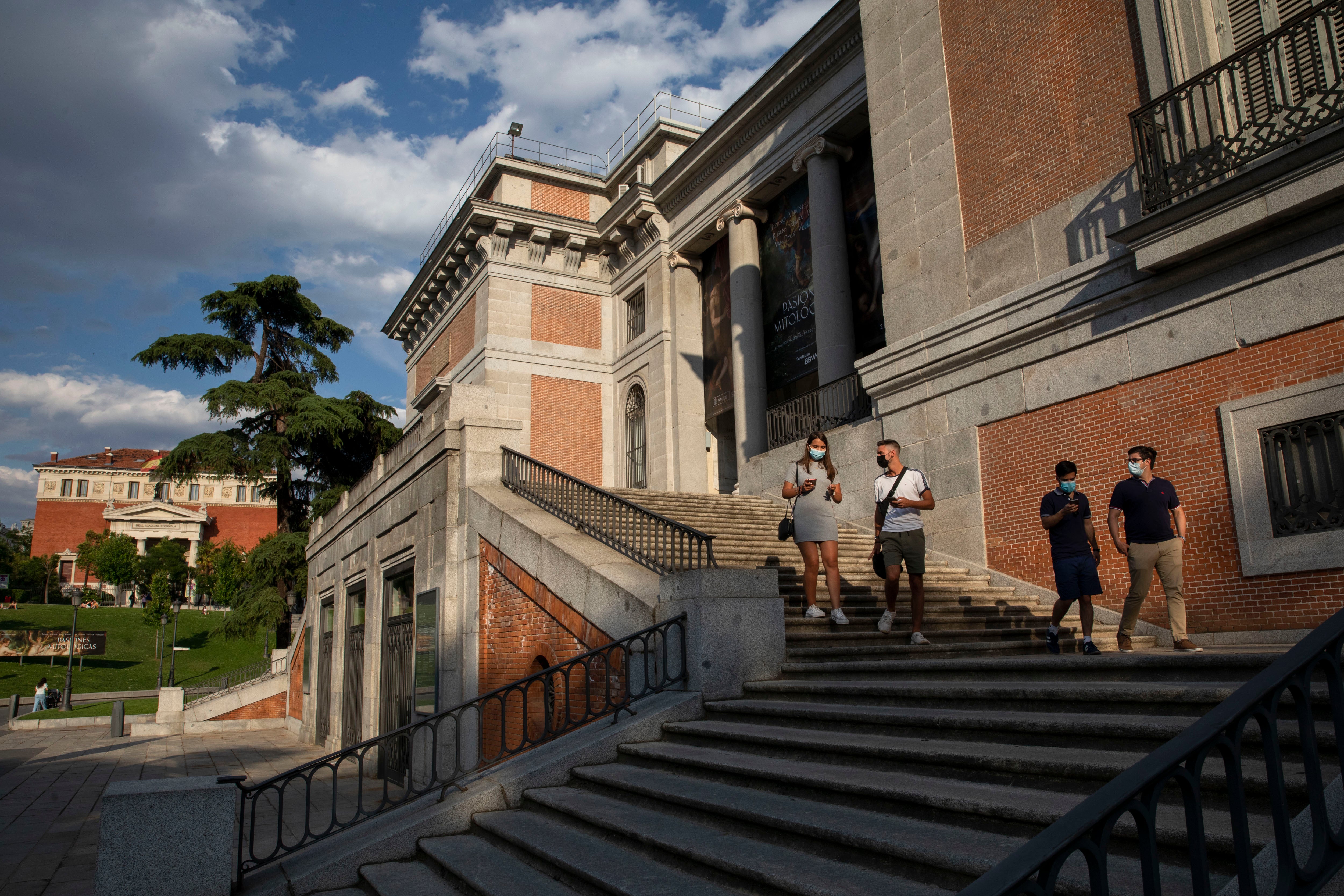Spanish museum in embarrassing climbdown over Goya painting
The Prado museum said the attribution was changed back to Goya to ‘reflect the ongoing debate around the origin of the painting’

To many admirers of Francisco de Goya, The Colossus is one of the Spanish master’s greatest works, which conveys a sense of menace and the political upheaval through which the artist lived.
Yet despite the importance of the work, it has been dogged by mystery.
Nobody knows if Goya really painted it or not.
In 2008, the art world was stunned when an expert declared that there might be one problem – it could have been the work of a little-known assistant rather than Goya himself.
Manuel Mena, the then curator of 18th century art at Madrid’s Prado Museum, wrote a report saying that The Colossus could have been painted by Asensio Julia, an assistant in Goya’s workshop.
Now, 13 years later, Madrid’s Prado Museum has changed tack once more, conceding that the painting, also known as The Giant, could once again be “attributed to Goya”.
A source at Spain’s foremost art museum told The Independent this was to “reflect ongoing debate around the origin of the painting not to say it was by Goya”.
In 2008, Mena, who carried out a detailed analysis of the picture, claimed the initials in the bottom left corner read “AJ”.
He told Goya experts at the Prado he believed this meant the painting could have been by Julia, who is thought to have collaborated with Goya on the frescoes of the San Antonio de Florida church in Madrid.
Assistants in Goya’s studio were known to do copies of some of his works, particularly those of kings and queens.
Goya experts remain critical of the Prado’s original decision to question the authorship of such an influential work.
Jesusa Vega, professor at the Autonomous University of Madrid, said Mena based his theory on a “good eye” for details of the painting.
“Science has its protocols and this means to investigate something there has to be a good method and the ‘eye’ is the denial of this and in this respect there is no consensus,” she told a Spanish newspaper.
A spokesperson for the Prado said: “We have changed the attribution as part of a re-organisation of 19th century works. It seemed the right time to do this to reflect the ongoing debate over the authorship of the work but we are not saying it was by Goya.”
Nigel Glendinning, the British art historian who died in 2013, said the inscription in a partly obscured section of The Colossus was “XVIII” and that the numerals corresponded with a painting called The Giant – an alternative name for The Colossus – in an inventory of Goya’s work dating from 1812.
“I never said it would be impossible that [someone else] might have intervened in the work of Goya, but the painting is too audacious to be by Asensio Julia, because of the centrifugal strength of the composition and its iconic power. I hope to be able to see the study and the proof,” he told ABC newspaper in 2008.
It is not the first time that experts have doubted that Goya painted The Colossus.
In 2001, the British art historian Juliet Wilson-Bareau claimed that it, and another work, The Milkmaid of Bordeaux, had been created by others.
Her theory was supported by Mena who said that doubts had existed about both the paintings for some time.
They said the Milkmaid could have been painted by Maria del Rosario Weiss, the child of Goya’s lover Leocadia Zorilla de Weiss, who lived with him.
The Prado denied the claims.
Considered one of the world’s first modern artists, Goya was capabable of bringing an incisive view to all facets of humanity.
The Colossus, which is dominated by the figure of a giant, was painted during the Peninsular war against France between 1808 and 1814.
Experts have interpreted the figure of the giant, looming over figures of people in a valley, as that of the Spanish people emerging to expel the French invaders who occupied Spain at the time.
Join our commenting forum
Join thought-provoking conversations, follow other Independent readers and see their replies
0Comments